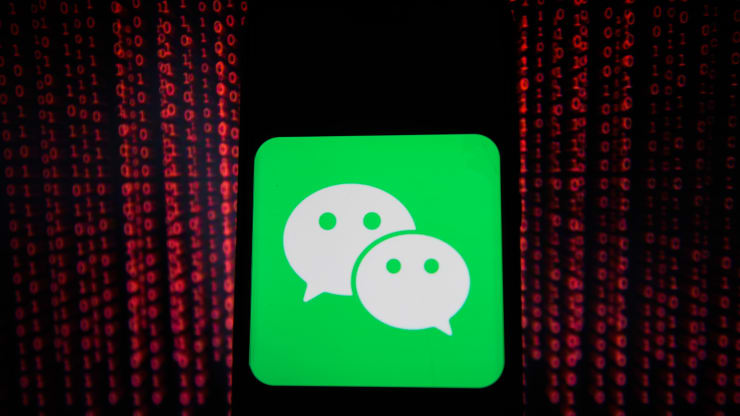Phone viruses infiltrate devices in various ways.
Therefore, this begs the question, ‘how do you know when your device has been compromised’?
There are a thousand and one ways to find out.
However, we’ll only show you the basic ones that you can do yourself.
It’s no secret that iPhones are the least susceptible to these viruses because of their state-of-the-art security system.
However, this doesn’t mean that they can’t get compromised.
Therefore, iOS users still need to tread carefully.
Your smartphone could be showing you different signs that you might take as normal.
Well, these signs could be tell-tale virus warnings:
How to know if your device has a virus
Here are a couple of things you might notice when your device has a virus:
1. Your battery dies quickly

Low Battery
A battery that drains in minutes or seconds can be a killjoy.
But you should find the root cause of this.
Your battery could die when playing games, listening to music and opening many tabs open at once.
If you don’t do any of the above activities and your new battery still dies quickly, your device might have a phone virus.
2. Your data runs out quickly

Low Data Mode on an iPhone
Again, there are several ways your data could get exhausted that are entirely expected.
If you don’t use your phone for heavy internet-related activities and still experience rapid data loss, then it’s possible it has a virus.
3. You have apps you didn’t download
This is one of the most common signs of a virus-infected device.
The first thing to do is to delete that app.
4. You get frequent pop-ups

12.news: Unwanted Pop-Ups
Unnecessary pop-ups could also be a sign of a virus-infected phone.
Like on your computer, it’s advisable to stay off these pop-ups as a safe bet.
5. Your phone crashes frequently
You could brush off one phone crash.
But when it becomes incessant, you should consider whether your device has a virus or not.
6. Your phone overheats
Viruses need their share of RAM and CPU to cause havoc on your device.
In turn, this can cause your tablet or phone to overheat.
An overheating phone or tablet isn’t a sure-fire sign that your device has a virus.
However, when this issue becomes frequent, there’s obviously something you need to check out.
7. You get fraudulent charges
Another silent move that viruses, especially trojans, make is to increase your phone’s bill.
Therefore, check your in-house purchase fee and text charges.
If you spot irregularities, then your phone could be infected with a virus.
Hackers collect these extra charges.
ALSO READ: How to Make Your iPhone Run Faster: 15 Amazing Tips
Virus, malware, and device threat: What’s the difference?
Your iPhone and Android device are more susceptible to getting malware than a virus.
But, what is the difference between these terms:
Virus: A virus is a code that can make copies of itself and cause damage to your phone by destroying data or corrupting files.
Malware: This is the generic name for any harmful software, including viruses.
Threat: This refers to any security risk to the software of your devices.
How can you get a virus on your device?
We expose our phones to viruses in the most unexpected ways. Here are the top ways:
1. By downloading unrecognized third-party apps on your phone
There are several virus-infected download platforms out there that can endanger your device.
Therefore, we recommend you get your apps straight from Google PlayStore or the App Store.
2. By clicking virus-infectedmessage attachments and emails
Unfortunately, downloading an infected email attachment opens the gateway for phone viruses.
The content of the attachment is what could cause harm if downloaded.
Most times, it’s usually the fault of the sender, but they could also be unaware.
3. By downloading files from unknown sources on the internet
Downloading content from the internet can increase your chances of getting a phone virus.
Did you know that even a picture could compromise your device?
4. By connecting your phone to another device
This is a rather less common way of getting a virus on your phone.
However, connecting to another device like a computer or even a Bluetooth device could be an issue.
What type of viruses can a phone get?
Now that we’ve cleared the air on the difference between a virus and a malware, let’s look the available types:
1. Trojan horses: Trojans are popular computer viruses that can also infect phones.
While in a phone, a trojan presents itself as any of your essential apps.
Therefore, if you suddenly notice you have two WhatsApp icons on your phone, your phone is likely infected with a Trojan.
Instead of opening both to figure out which is authentic, follow the steps below in removing the app from your phone.
Trojans can also appear as text messages.
2. Spyware: You can get spyware when you download seemingly legitimate apps on your phone.
It attaches itself to your device and then tracks your activities, including usernames and passwords.
It’s quite tricky to spot spyware on your phone until it starts causing havoc.
3. Adware: This is a rather common virus type.
While many users think it is harmless, adware damages your phone and make you lose important files.
At first, your phone will only be bugged with a few pop-ups.
However, at its worst, this virus can root and steal data from you.
4. Ransomware: Like Trojan horses, ransomware originated from desktop computers.
However, it has slowly crept into the mobile world.
As its name implies, ransomware holds your device’s data to ransom.
Therefore, you won’t be able to access it until an action is completed.
5. Worms: Finally, we have worms. Most viruses on this list need user interaction to cause problems.
However, the objective of worms is to move to as many devices as possible until cybercriminals are ready to cause havoc.
Worms are one of the most difficult viruses to spot. However, with a good antivirus tool, you can fetch them out.
How to get rid of malware on your device?
Identifying a virus on both Android and iOS devices involves the same steps.
That’s because a virus does the same thing, irrespective of the device’s operating system.
However, getting rid of the virus is where there are differences.
A quick fix is to keep your phone updated.
As we said earlier, another is to avoid downloading from non-credible sources and stick to the authorized ones.
Using an antivirus to remove viruses
Deleting a malware on your device is a rather simple task.
However, you need to arm yourself with the right tools to get the job done.
1. Hotspot Shield VPN app for Android: This is a top tool for getting rid of phone viruses and a reliable Android cleaner that keeps devices safe.
Just by clicking a button, your device would be scanned thoroughly.

Hotspot VPN Shield
After the scan is complete, the tool then identifies the viruses on your phone.
From the app, you can then delete the infected applications.
2. Avast Mobile Security For Android: This is also another top-notch Android antivirus tool that can help keep your device safe.

Avast Mobile Security Interface
By default, the antivirus blocks you from getting into a virus-infected site.
It will also stop you from downloading an app that would disrupt your phone’s functionality.
How to get rid of malware on your iPhone?
ALSO READ: How to Recover Deleted Files on Your Devices [Windows, Android, Linux, Mac, SD Card]
Like we mentioned earlier, the chances of getting a virus on an iOS device are slim.
Although if you do, here is the easiest iPhone virus removal process to follow:
- Before you begin the cleaning, ensure your files and apps are backed up with iTunes or iCloud.
- Next, head over to ‘Settings’ then ‘General’. When you do that, click ‘Reset’.
- In the follow up prompt, click on ‘Erase All Content and Settings’.
When you do that, make sure your device is back to a previously saved version.
You would need to follow all the necessary procedures to recover your backups.
At this point, you can go to your iCloud and sync your device.
Modern-day smartphones are just as vulnerable as computers.
Using software to remove malware on your phone
The first thing to do off the top of your head is to delete the app you think has the virus.
If you’re having trouble getting around this one on your own, you might need a little help.
Avast Mobile Security For iOS, for example, is a popular tool that can give you a hand with iPhone virus issues.
However, this tool is not essentially an antivirus.
Its sole purpose is to protect your iPhone just in case it comes across such threats.
Here are the other apps that could do the trick for you on any type of phone you use:
1. Bitdefender Antivirus

Bitdefender Antivirus Interface
Firstly, this tool is completely free and pretty straightforward to use.
All you have to do is download and launch the app on your device.
Click on ‘Scan’, and it’ll start looking for the viruses on your device.
The downside is it doesn’t have anti-theft or account security features.
This app’s fantastic feature is that one scan is enough to keep your phone protected in real-time.
2. Avira Antivirus

Avira Mobile Security Interface
This tool helps to keep your online activities safe. However, it also:
- Keeps track of how many applications have access to your data.
- Speeds up and cleans your phone.
- Keeps track of your emails to make sure there is no threat of invasion.
You need to pay a subscription fee to get this antivirus software, though.
ALSO READ: How to Retrieve Deleted Photos on Your Android Device: 6 Stressless Steps
3. ESET Mobile Security and Antivirus

Security Interface for ESET Mobile
ESET is one of the most popular antivirus softwares out there.
Its selling point is that it makes browsing safe.
Therefore, you don’t have to worry about your phone being attacked by viruses.
It automatically blocks any virus-infected pages.
ESET also consistently scans your devices for hidden viruses and malware.
It can also locate devices via GPS.
Eset Mobile Security and Antivirus protects devices against phishing attempts.
4. McAfee Mobile Security

McAfee Antivirus Interface
It’s seen as the Ivy League of antiviruses because it has been in the game for many years.
Initially, the antivirus was made for computers. However, you can now get it on your mobile device.
It offers you features such as free data optimization and real-time virus protection.
Check out some of the free amazing additional features;
- It has a feature to help you delete personal information when your device gets stolen or compromised.
- It also provides a feature of helping you find the location of a lost device.
- The premium version of McAfee Antivirus comes with more features like a Virtual Private Network (VPN).
ALSO READ: How to Tweet with Your Voice: Text Less Say More with Twitter Voice Tweets
5. Kaspersky Internet Security for Android

Kaspersky Internet Security
It is also one of the popular antivirus tools around and is widespread among computer users.
It is also a handy tool for Android users.
However, you’d only truly enjoy its features if you subscribe to the paid version.
Some of its essential features include;
- It helps you scan for malware and viruses on your device, erase the malware, and look out for security threats.
- The antivirus also comes with a feature that deletes all sensitive data if your phone gets swollen or compromised.
Steps to protect yourself from phone viruses
1. Use a secure Wi-Fi: Avoid connecting to public Wi-Fis you don’t trust.
And if you must, ensure you use a VPN.
2. Check app permissions before you download: Go through the terms and conditions before you get any app on your phone.
Notice any sign that the app could use your personal information.
3. Avoid jailbreaking your device: Your safe bet is to leave your device unrooted.
Why? A Jailbroken phone is vulnerable to the dangers of viruses on open-source codes.
You should also regularly update your OS.
ALSO READ: How to Shazam: A Music and Sound Detection App
In conclusion
You can’t totally rule out the possibility of having a phone virus.
However, with the right tools and steps to clean your phone, you can solve this issue yourself and in only a few minutes.
Follow our recommendations above to check if your device has a virus and how to make it virus-free.
Found this interesting? Share!

























 and then
and then